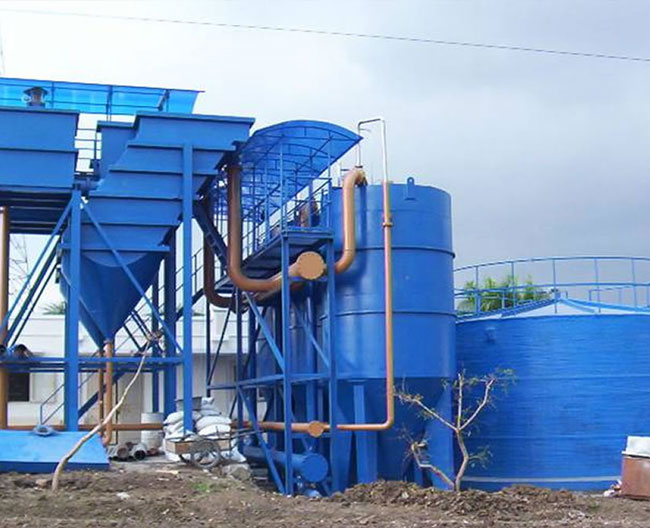Water Threament Plant
Water Treatment Plant involves a combination of maintenance, operation, and optimization of the systems and processes used to treat and purify water for consumption, industrial use, or environmental purposes. The goal is to ensure the plant operates efficiently, meets regulatory standards, and produces clean, safe water.
Here’s a breakdown of the key aspects involved in servicing a water treatment plant:
1. Routine Operations and Monitoring:
- Water Quality Monitoring: Regular testing of water samples to ensure parameters such as pH, turbidity, chlorine levels, dissolved oxygen, hardness, and microbial contaminants meet required standards.
- Flow Monitoring: Tracking the flow of raw water entering the plant, treated water leaving the plant, and monitoring distribution systems to ensure adequate pressure and flow.
- Automation and Control Systems: Maintaining and monitoring the plant’s automated control systems to ensure that pumps, valves, and treatment processes are functioning correctly.
2. Filtration System Maintenance:
- Cleaning Filters: Regular cleaning or replacement of filtration media (sand, activated carbon, etc.) to ensure efficient filtration and removal of particulate matter, chemicals, and microorganisms.
- Backwashing: For certain filtration systems, periodic backwashing may be required to remove trapped contaminants and restore the filter’s effectiveness.
- Membrane Maintenance: In reverse osmosis systems, maintaining and cleaning membranes is critical to prevent fouling and scaling that could reduce the system’s efficiency.
3. Chemical Handling and Dosing:
- Chemical Dosing Systems: Regular checks and calibration of the chemical dosing systems, including coagulants, flocculants, disinfectants (like chlorine), and pH adjusters. Ensuring correct dosages helps in flocculation, disinfection, and overall treatment efficiency.
- Chemical Storage and Safety: Ensuring chemicals are stored properly and safely, with regular inventory checks to avoid shortages or expired chemicals.
- Safety Measures: Implementing and maintaining safety procedures for handling potentially hazardous chemicals.
4. Pump and Motor Maintenance:
- Pump Servicing: Regular inspection, lubrication, and servicing of pumps used in various stages of treatment (e.g., raw water intake pumps, dosing pumps, filtration pumps, etc.) to ensure continuous and efficient operation.
- Motor Inspections: Ensuring motors driving pumps, fans, and other equipment are functioning properly. Includes checking for wear and tear, and replacing parts when necessary.
- Alignment and Calibration: Ensuring that pumps and motors are correctly aligned and calibrated to prevent mechanical failure and reduce energy consumption.
5. Sludge Management and Disposal:
- Sludge Removal: Managing the collection and disposal of sludge generated during the water treatment process. This includes regular removal from sedimentation tanks and filtration units.
- Dewatering and Drying: Employing techniques like centrifugation or belt presses to dewater sludge, reducing volume before disposal or reuse.
- Compliance with Regulations: Ensuring that sludge disposal meets environmental regulations, including proper treatment and disposal methods (landfill, incineration, agricultural use, etc.).
6. Disinfection Systems:
- Chlorine Handling and Monitoring: Maintaining chlorine gas or liquid chlorine systems for disinfection, ensuring safe and effective application while minimizing the risk of leaks.
- UV Systems: Servicing ultraviolet (UV) disinfection systems, including lamp cleaning and replacement, and ensuring that the system is properly calibrated for effective microbial inactivation.
- Ozone Generators: For advanced oxidation, ensuring ozone generators and associated equipment are functioning efficiently.
7. Electrical and Instrumentation Systems:
- Electrical Equipment Maintenance: Ensuring that the plant’s electrical systems, including power supply, backup generators, and control panels, are well-maintained and reliable.
- Instrument Calibration: Regular calibration of sensors and instruments used for measuring parameters like flow rate, turbidity, chemical dosing, and pressure. Calibration ensures accurate readings and proper process control.
- Alarm Systems and Fail-Safes: Ensuring that alarm systems for water quality or mechanical failures are functioning, and fail-safe systems are in place to shut down processes in case of abnormal conditions.
8. Emergency and Contingency Planning:
- Emergency Procedures: Having contingency plans for emergencies such as water contamination, equipment failure, or power loss. This includes backup systems like standby generators, additional treatment units, and emergency disinfection methods.
- Training Staff: Regular training for plant operators and maintenance staff on emergency procedures, handling unexpected issues, and using emergency equipment.
- Backup Water Sources: Ensuring there are alternative water sources or emergency systems in case of failure in the primary treatment plant.
9. Environmental and Regulatory Compliance:
- Discharge Monitoring: Ensuring that any wastewater or treated water discharge from the plant meets regulatory standards set by environmental agencies. Regular testing for pollutants such as chlorine, phosphates, nitrates, and pathogens.
- Record Keeping: Maintaining accurate records of water quality testing, chemical usage, sludge disposal, and maintenance activities, which are essential for compliance with local, national, and international regulations.
- Reporting: Generating compliance reports for regulatory agencies and ensuring transparency and accountability in water treatment operations.
10. Energy Efficiency and Cost Optimization:
- Energy Usage Monitoring: Tracking the energy consumption of the plant, particularly the power used by pumps, motors, and disinfection systems, to identify opportunities for reducing energy costs.
- Process Optimization: Identifying and implementing operational improvements such as optimizing chemical dosing, improving filtration efficiency, and minimizing water loss to improve cost-effectiveness.
- Equipment Upgrades: Implementing energy-efficient technologies like variable frequency drives (VFDs) or upgrading pumps and motors to more energy-efficient models.
11. System Upgrades and Modernization:
- Technological Advancements: Incorporating new technologies such as smart sensors, automation, and real-time data analytics for better control, monitoring, and decision-making.
- Asset Management: Implementing asset management strategies to predict equipment failures, plan for long-term maintenance, and optimize the lifespan of equipment.
- Process Redesign: Upgrading treatment processes based on new regulatory standards or environmental requirements, such as implementing advanced filtration technologies (e.g., membrane filtration) or improving disinfection practices.
Why Regular Water Treatment Plant Service is Essential:
- Ensures Safe Water: Regular maintenance ensures that water is treated to meet health and safety standards, preventing contamination or unsafe water supplies.
- Operational Efficiency: Preventing breakdowns, optimizing performance, and reducing downtime to ensure the plant operates at maximum efficiency.
- Compliance with Regulations: Ensures the plant adheres to environmental and health regulations to avoid penalties and maintain public trust.
- Cost Management: Reducing energy consumption, improving chemical usage, and extending the life of equipment reduces overall operational costs.


